After a week where it did a reasonable imitation of the show everyone who doesn’t watch it thinks it is, Gegege no Kitarou is back to being the show everyone who watches it knows it is most of the time. Not so much in terms of biting social commentary (though there is a bit of that) but general darkness. This was a pretty scary episode on the whole, one of those Gegege stories where people who die sometimes stay dead, and it took the main character to a darker place than we’ve seen him go before.
The story this time takes place on an island, an aspiring tourist resort than Neko-musume has won a trip to in the lock shoutengai raffle. If it seems like a lot of youkai tales take place on islands (including in this mythology), that’s because they do. Japan is an island nation in every sense of the word, a nation composed entirely of islands. The smaller populated ones particularly always have a high density of very old and often terrifying legends, because these isolated environments are superb culture incubation chambers. The notion of island living is hard-wired into the Japanese psyche, and stories like this one seem to be viscerally impactful for much of the country.
The trip being for three people, Catchick has invited Kitarou (of course) and Mana (though Medama-oyaji of course tags along). Kitarou is a little late in arriving, having overslept, and while waiting for him Mana and Neko-musume intervene as some bullies are beating down a boy named Kyousuke-kun (Mana is either magically drawn to bullies, especially vigilant towards them, or both). The issue is the reason Kyousuke is getting bullied – for spreading word about the island’s scary legend, that of a monster named Gyuki who’s sealed at a place (fittingly) called Gyuki Rock. Such stories are bad for tourism, supposedly – though my take on it is as long as the giant youkai doesn’t actually show up, I think they’re probably good for tourism.
This being Gegege no Kitarou naturally the youkai is going to show up, and he does so thanks to a director and presenter who’ve been lured to the island by Nezumi-otoko in search of scary legends for a TV special (which would have been great for tourism, ironically). The locals see the appearance of Gyuki as an excuse for selfies, but he means business and things are looking pretty grim until Kitarou shows up in the nick and puts out the fire. But that’s where the story is just getting started.
A couple of things are worth noting here besides the more obvious direction this incident takes the story. First off, the host (both he and the director are played by veterans of earlier incarnations of the series) is actually dead. And second, oh, by the way Kitarou has just killed a human being who seems to have been guilty of nothing worse than being a boob. Admittedly he didn’t know that at the time, but it’s still a reminder of just how dark this version of “Kitarou” goes without calling attention to the fact. As for that more obvious direction, Kyousuke-kun shares the story his grandfather (who’s played by a seiyuu who’s appeared in every single incarnation of GGnK that bears the title, Tanaka Ryouichi) told him – “He who kills the Gyuki becomes the Gyuki.”
Salvation comes in the form of the island’s deity, Karura-sama, after Grandpa convinces the entire island to pray for help at Karura’s shrine. Karura (played by another GGGnK vet, of course) looks like a tengu and introduces himself as one of the 28 guardians of the thousand-armed Kannon, the Nijuuhachibushuu (which he in fact is), and defeats the Gyuki. It turns out to be a gaseous youkai that infects those with material bodies and cannot be killed, only sealed – so it’s probably a good bet than someone will trespass on Gyuki Rock again sooner or later and start this whole nightmare over. But for now, the day is saved and the recent victims are undigested. And not to bury the headline, but Neko-musume gives Kitarou a big hug after he survives his ideal (and remembers none of it). That’s surely progress, of a sort.




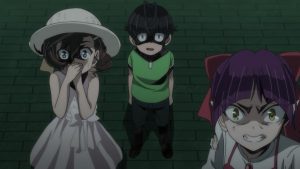

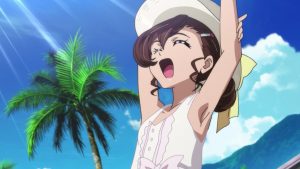
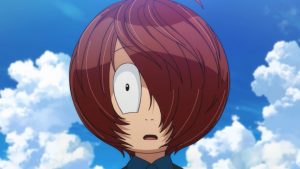



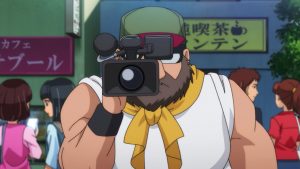
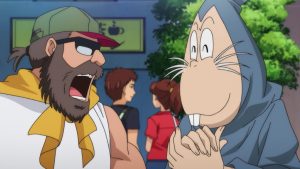
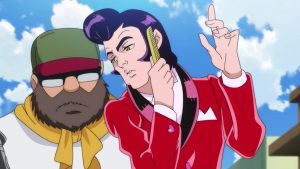

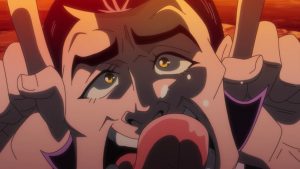

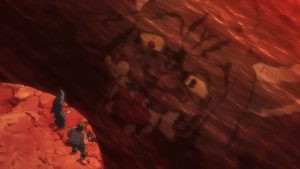
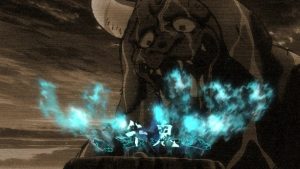


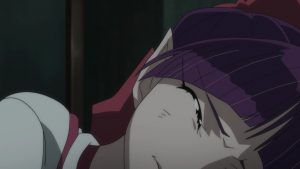

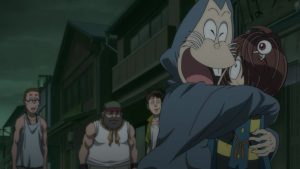
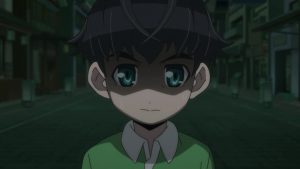

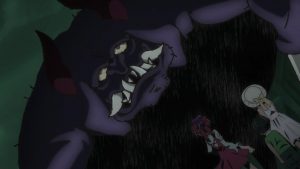

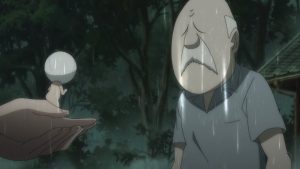




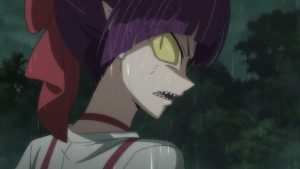
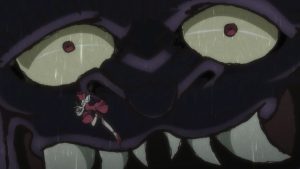
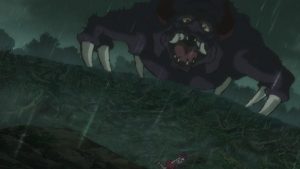
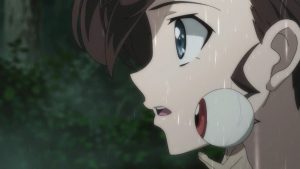
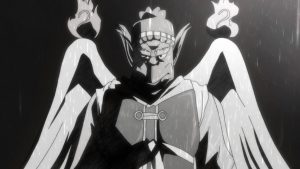



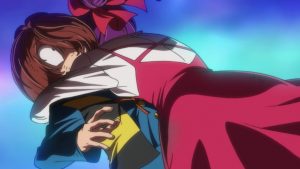
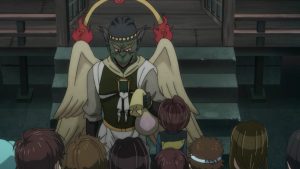
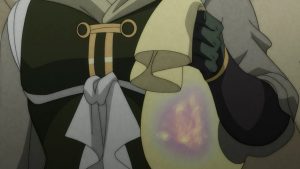
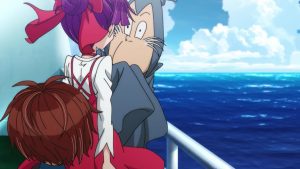
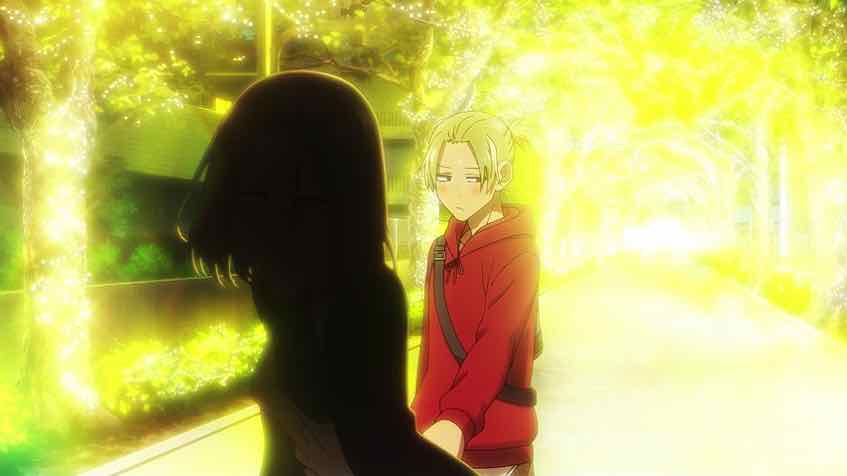
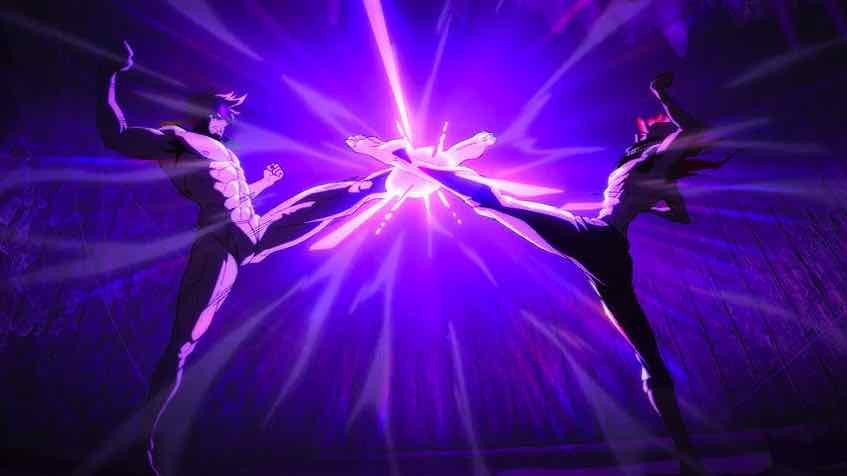
Deluxe
August 27, 2018 at 3:57 pmSo I’ve watched about ten episodes of this show and one thing I’ve noted is how it is almost completely devoid of 3DCG or similar artifical effects. Every character, creature or setting is hand-drawn, even if it’s simplistic or lacking detail. I think this commitment to traditional animation goes a long way in asserting the show’s visual identity and appeal, while furthering its message about the relevancy of traditional values.
Guardian Enzo
August 27, 2018 at 4:06 pmYep, it’s in the running for best production values of 2018 for me. And it’s definitely succeeding commercially in Japan.
Proto
August 29, 2018 at 9:49 pmThank you thank you for keeping up your coverage of this series. Your dogged promotion finally got to me and I’ve been watching all the episodes the last couple weeks. This is indeed a series that is much better than what the supposed target audience would indicate. This is gold.
Guardian Enzo
August 30, 2018 at 12:45 amMusic as ever to my ears!